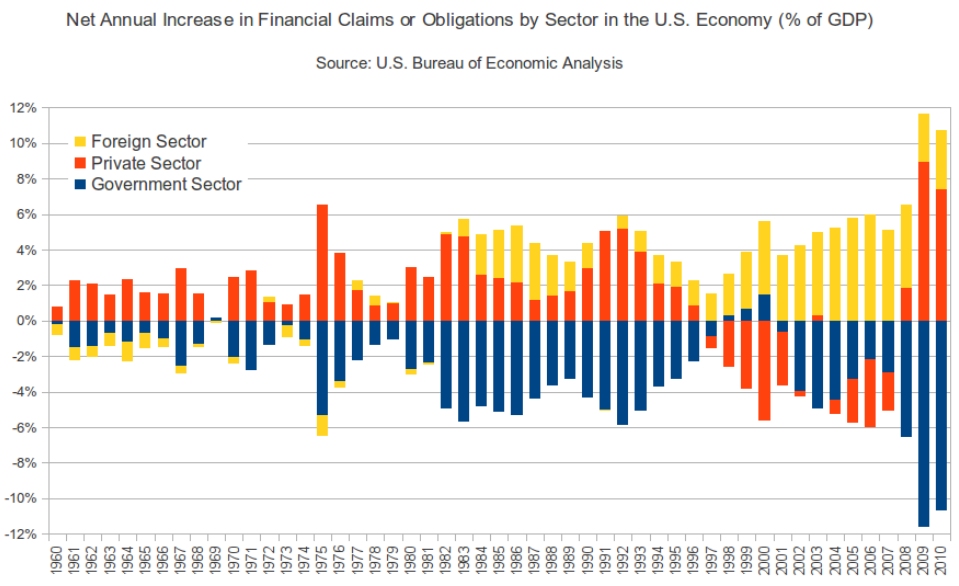After failing high school - disillusioned with the meaning of life - David drifted until he was introduced to the Metaphysics of Quality. He now spends his time using it to make things better!

The Morality of Money
‘Money, in the MOQ, is a pure and simple index of social quality.’
Robert Pirsig
‘Money, in the MOQ, is a pure and simple index of social quality.’
Robert Pirsig
With money representing social quality, the direct link between a government’s budget and what it considers as valuable becomes immediately apparent. Looking at the budgets of the US, UK and Australia is therefore a great way to see what each culture deems valuable.

A lot can be said about a culture by what it spends its money on. In fact it could be said that a culture is what it spends its money on, because a culture is what it values. I won’t get into the details of each budget and the morality of each according to the MOQ in this post but first I just want to spend some time discussing the limits of a budget, what they’re thought to be, and what they actually are.
Basically, current economic thinking claims that budgets are constrained by their deficit. A government’s budget is compared to a household budget and deficits are seen as some kind of a sin to be avoided and surpluses are seen as a good to be continued. However the problem with this thinking is that a government’s budget is not constrained as per a household due to the fact that a government, unlike a household, can produce its own money without constraint. How then, did we end up with this discrepancy?
Historically, the value of money had been pegged against the gold standard, and as there was a limited supply of gold, there was indeed a limit to how much money could be spent relative to the amount of gold available. However in 1971 President Nixon ended international convertibility of the U.S. Dollar to gold and floated the currency. Since then, standard economic thinking doesn’t appear to have adapted to the fact that there is no longer such a restriction in the amount of money a government can produce!
That’s not to say there aren’t constraints however. Simply speaking, the true constraint to an economy is inflation when ‘too much money chases too few goods’. This isn’t a risk though, when the output(goods) of an economy isn’t at a maximum as would be the case when there is unemployment. Because of this, a government backed Job Guarantee, would be not only obviously good for the individuals unemployed, but a great way to keep an otherwise unemployed workforce, skilled and available for the private sector when required.
And this is the argument of Modern Monetary Theory(MMT), which supports not only a Job Guarantee but also government deficits. Deficits are seen as typical because the private sector, which would then be in surplus(graph above), values saving money for harder times. Such economic thinking, resulting in a great increase in the quality a society can produce, is strongly supported by the Metaphysics of Quality and why I’ve written about it here. MMT is becoming increasingly popular as an alternative to the austerity being applied to many struggling economies around the world.
The Misdiagnosed Threat Of Artificial Intelligence
I’ve seen lots of talk recently about the moral threat of AI. So, what does the MOQ have to say about it?
To start with, how about a fact which appears to be lost in much of the discussion.
No computer has ever made a moral judgement which it hasn’t been told to make and so there is no reason to think this will ever change. Believing this will change spontaneously as a result of improved intelligence of machines is just that, a leap of faith, and not supported by evidence. As it stands, it is the human programmer making all moral judgements of consequence. Computers, being 0’s and 1’s, are simply the inorganic tools of the culturally moral programmer.
Unfortunately though, this isn’t likely to be appreciated any time soon because of a philosophical blind spot our culture has. That blind spot is our metaphysics which neglects the fundamental nature of morality and in doing so gets confused about both where morality comes from and whether machines can make moral judgements independently of being instructed to do so.
For example, in the case of a recent foreign affairs article – Nayed Al-Rodhan appears to believe that AI will start making moral judgements as a result of more ‘sophistication’ and learning and experience.
“Eventually, a more sophisticated robot capable of writing its own source code could start off by being amoral and develop its own moral compass through learning and experience.”
The MOQ however makes no such claim which, as already mentioned, is contrary to our experience. According to our experience it is only human beings and higher primates who can make social moral judgments in response to Dynamic Quality. Machines are simply inorganic tools and their components only make ‘moral decisions’ at the inorganic level.
That’s not to say though, that there aren’t any dangers of AI and that all risks are overblown. AI – being loosely defined as advanced computational/mechanical decision not requiring frequent human input – threatens society if it is either poorly programmed and a catastrophic sequence of decisions occurs or if it is well programmed by a morally corrupt programmer. However each of these scenarios aren’t fundamentally technological but philosophical, psychological & legal in nature.
The unique threat of AI is this aforementioned increase in freedom of machines to make decisions without human intervention making them both more powerful and more dangerous. The sooner our culture realises this, the sooner our culture can start to discuss these moral challenges and stop worrying about the machines ‘taking over’ in some kind of singularity apocalypse. Because unfortunately, if we don’t understand the problem, a solution will be wanting, and therein lies the real threat of AI.

A Platonist and a Sophist discuss Quality
 “Catherine Rowett has been a Lecturer in Philosophy at the University of East Anglia, Norwich (since 2003), Reader in the School of Archaeology, Classics, and Oriental Studies at the University of Liverpool from 2000 to 2003, and before that Reader in the Department of Philosophy at the University of Wales, Swansea. Her publications include Rethinking Early Greek Philosophy (1987) and Eros Unveiled: Plato and the God of Love (1994), as well as the chapter on Heraclitus in the Routledge History of Philosophy, Volume 1 and many articles on a wide range of issues in Ancient Philosophy from the Presocratics to the Early Christian period.” From Amazon.com
“Catherine Rowett has been a Lecturer in Philosophy at the University of East Anglia, Norwich (since 2003), Reader in the School of Archaeology, Classics, and Oriental Studies at the University of Liverpool from 2000 to 2003, and before that Reader in the Department of Philosophy at the University of Wales, Swansea. Her publications include Rethinking Early Greek Philosophy (1987) and Eros Unveiled: Plato and the God of Love (1994), as well as the chapter on Heraclitus in the Routledge History of Philosophy, Volume 1 and many articles on a wide range of issues in Ancient Philosophy from the Presocratics to the Early Christian period.” From Amazon.com

It’s been approximately two thousand five hundred years since Socrates, Plato and the Sophists roamed ancient Athens. It’s been about that same amount of time then since a Sophist discussed Quality with a Platonist. You can see my modern day Sophist response to Catherine Rowett the Platonist academic’s review of Zen and the Art of Motorcycle Maintenance by clicking here.
My thanks first and foremost to Catherine Rowett for doing what so few ancient greek academics have done by acknowledging the existence of Robert Pirsig’s insights into ancient greek philosophy. While her views toward them are mostly antagonistic; writing a paper on them is largely a step forward. Thanks also go to Dr. Ant McWatt who provided final draft comments.
The abstract is as follows:

Introducing SOM.is
Rather than explain the benefits of the Metaphysics of Quality on this site I decided to create two new sites which give an overview of Subject-Object Metaphysics and the Metaphysics of Quality respectively.
The first site on Subject-Object Metaphysics has been launched and can be found by going to som.is

Benefits of the MOQ
There are many benefits of the Metaphysics of Quality. A question I’m often asked when explaining the MOQ to others is:
‘Why should I believe that value is the source of all things?’
The first response to this question is that unlike the belief that either subjects or objects are at the base of reality – value isn’t something we believe, value is something we experience. Therefore the best way to see if value is at the source of all experience is to try this idea for yourself and to see if it indeed does have any quality. So really the main reason to see value/morality as the most fundamental thing in the universe is that it’s better and more beautiful than if we don’t. There is no reason why we currently insist that either Objects or Subjects are fundamental in the universe. Like all beliefs this belief is itself open to questioning. So what’s better is if we see value/morality as fundamental in the universe and not either subjects or objects.
The Metaphysics of Quality, in particular, is a far superior and more eloquent way of understanding experience. This is because it provides a better conceptual framework for understanding a whole host of problems which exist when we simply use a Subject, Object Metaphysics that neglects the importance of values or morality.
Over the next several posts I’ll be outlining some of these benefits..

